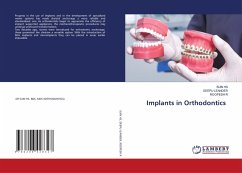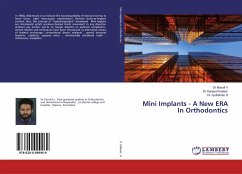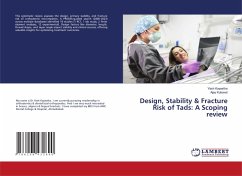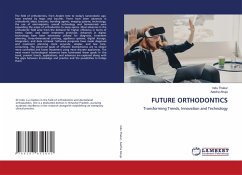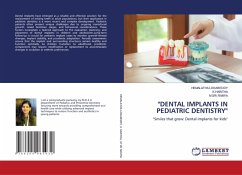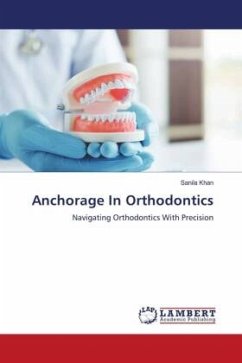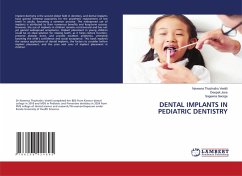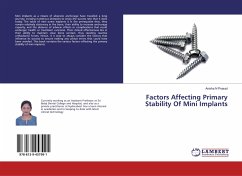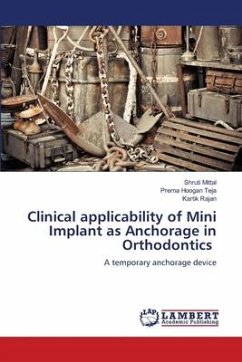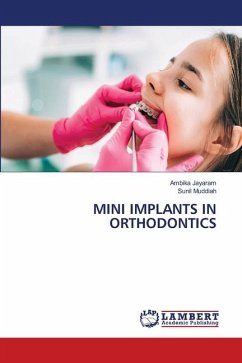
MINI IMPLANTS IN ORTHODONTICS
Versandkostenfrei!
Versandfertig in 6-10 Tagen
45,99 €
inkl. MwSt.

PAYBACK Punkte
23 °P sammeln!
The teeth are moved into desired position by the application of force generated by the active components of the orthodontic appliance. Anchorage control is an important factor in the success of orthodontic treatment. Because teeth are unstable when utilized for anchorage, it has been discovered that the teeth chosen for the anchorage frequently move simultaneously with the teeth in which movement is sought. Some alternative source of resistance has become required, since teeth have been found to lack adequate stability to produce certain desired changes in the dentures and basal bone. Thus, it...
The teeth are moved into desired position by the application of force generated by the active components of the orthodontic appliance. Anchorage control is an important factor in the success of orthodontic treatment. Because teeth are unstable when utilized for anchorage, it has been discovered that the teeth chosen for the anchorage frequently move simultaneously with the teeth in which movement is sought. Some alternative source of resistance has become required, since teeth have been found to lack adequate stability to produce certain desired changes in the dentures and basal bone. Thus, it was believed that stability would be significantly enhanced if anchorage could be obtained from a point within the basal bone. The limitations and issues with acceptance of traditional intraoral or extraoral anchorage aids have led to a growing interest in implants as a way to improve anchorage in orthodontic treatment. This book throws light onto the history, biological aspects, classification and design, implant placement techniques and procedures, clinical applications, complications, indication and contraindications of mini-implants in orthodontics.



